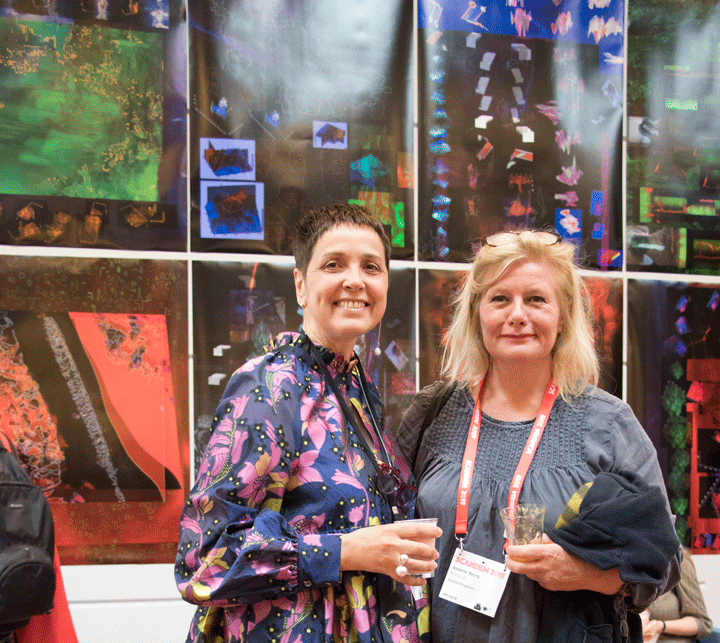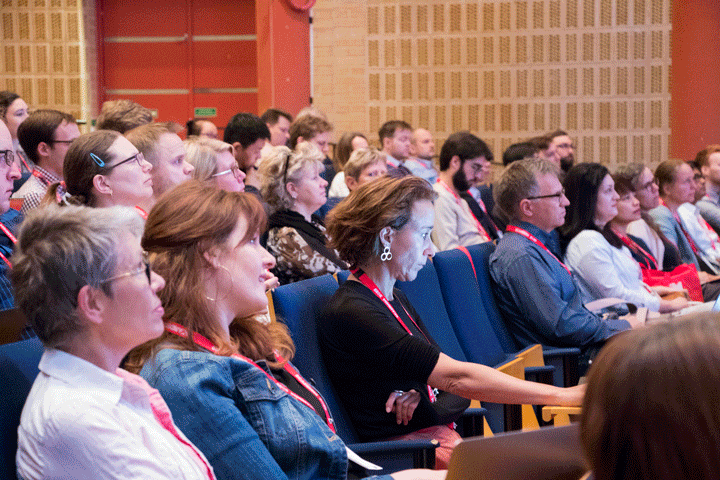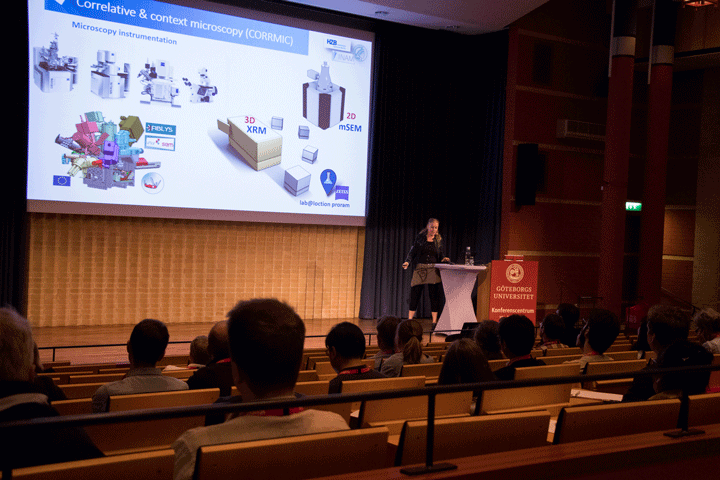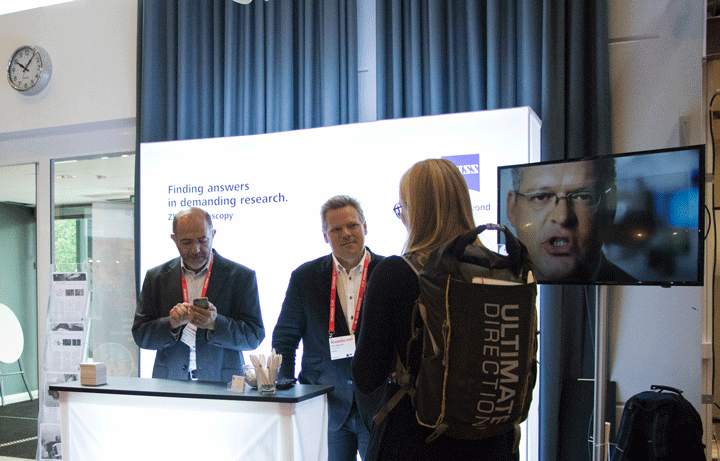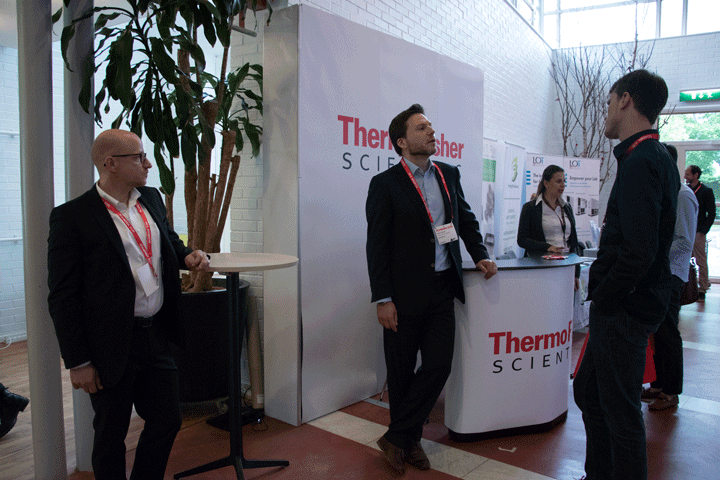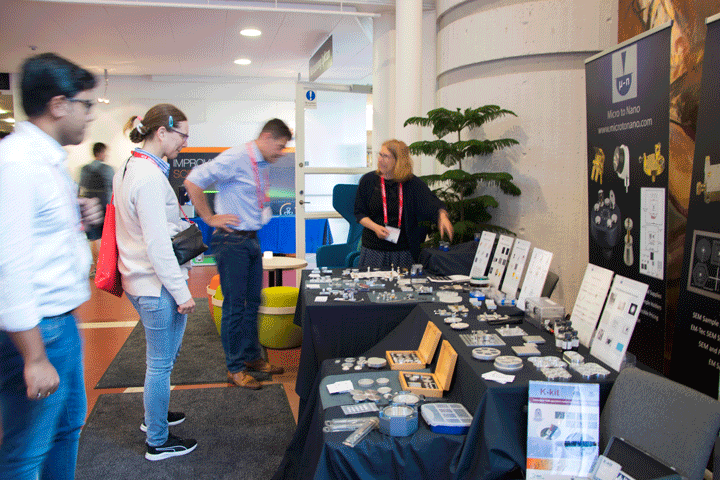SCIENTIFIC MEETING. Last week more than 200 researchers within both materials and life sciences gathered for the Nordic Microscopic Society’s annual Conference. The Conference, which was held in the Wallenberg Conference Centre, provided new ideas about how various microscopy techniques can be used and how they can be combined for further advancements in research.
[scroll down for more photos]
The SCANDEM 2019 conference was the Nordic Microscopy Society’s 70th annual meeting. The conference takes a wide-angle approach to imaging. The June 11–14 Conference began with a one-day workshop.
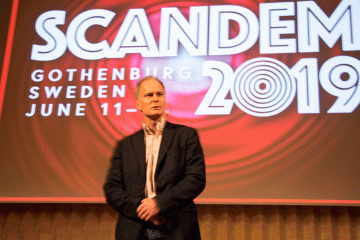
Eric Hanse, vice dean for research infrastructures, introduced the conference.
“When I started my research career 30 years ago, I already was impressed by how much microscopic technology had advanced and the precise details we could get. I remember thinking then that we probably had gone as far as we could go when it came to microscopy. But since then we have made tremendous progress, and the field continues to evolve and provide new opportunities for imaging that we previously considered impossible,” says Hanse, noting that Sahlgrenska Academy deserves to be proud of the microscopy facility in its Centre for Cellular Imaging (CCI).
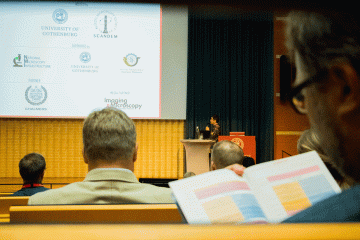
Meeting colleagues
Julia Fernandez-Rodriguez, Head of the CCI core facility, also served as local host for the meeting. She commented that the meeting provided the opportunity for participants to challenge their brains, build networks and maintain existing relationships.
“We can look forward to learning about new technologies, but equally important is the chance to network with colleagues and create new contacts,” she said during her introductory remarks.
Parallel sessions during the meeting dealt with topics such as multimodal microscopy, fast super-resolution microscopy in real time, functional imaging, advanced imaging and diffraction. Subjects also addressed artificial intelligence (AI), machine learning and data analysis.
Nobel distinction
More than 210 people attended the meeting. A total of 23 guest speakers took part, and there were an additional 18 contributors at the meeting. The meeting also included a large poster exhibition and an exhibition where 28 companies displayed their products and services.
One of the invited speakers was Nobel Laureate Stefan W. Hell, a professor and director of the Max Planck Institute for Biophysical Chemistry in Germany, one of the three laureates receiving the Nobel Prize in Chemistry in 2014 for developing super-resolved fluorescence microscopy. Professor Hell made his presentation on Thursday morning after an introduction by Pro-Vice-Chancellor Mattias Goksör.
Began with workshop
When the Nordic Microscopic Society had previously held its annual conference in Gothenburg, Chalmers University of Technology was the hosting institution, but this time Sahlgrenska Academy handled arrangements. Great attention was devoted to creating a balanced program with interesting content for both researchers in materials science and those in life sciences. The conference began with the CLEM (correlative light and electron microscopy) workshop for 25 of participants.
The Nordic Microscopic Society promotes microscopy in the Nordic region. The name SCANDEM stands for the society’s original name, Scandinavia’s Society for Electron Microscopy. When the society enlarged its scope to include a broader meaning of microscopy in 2002, the name changed but not the acronym.
TEXT AND PHOTO: ELIN LINDSTRÖM CLAESSEN

